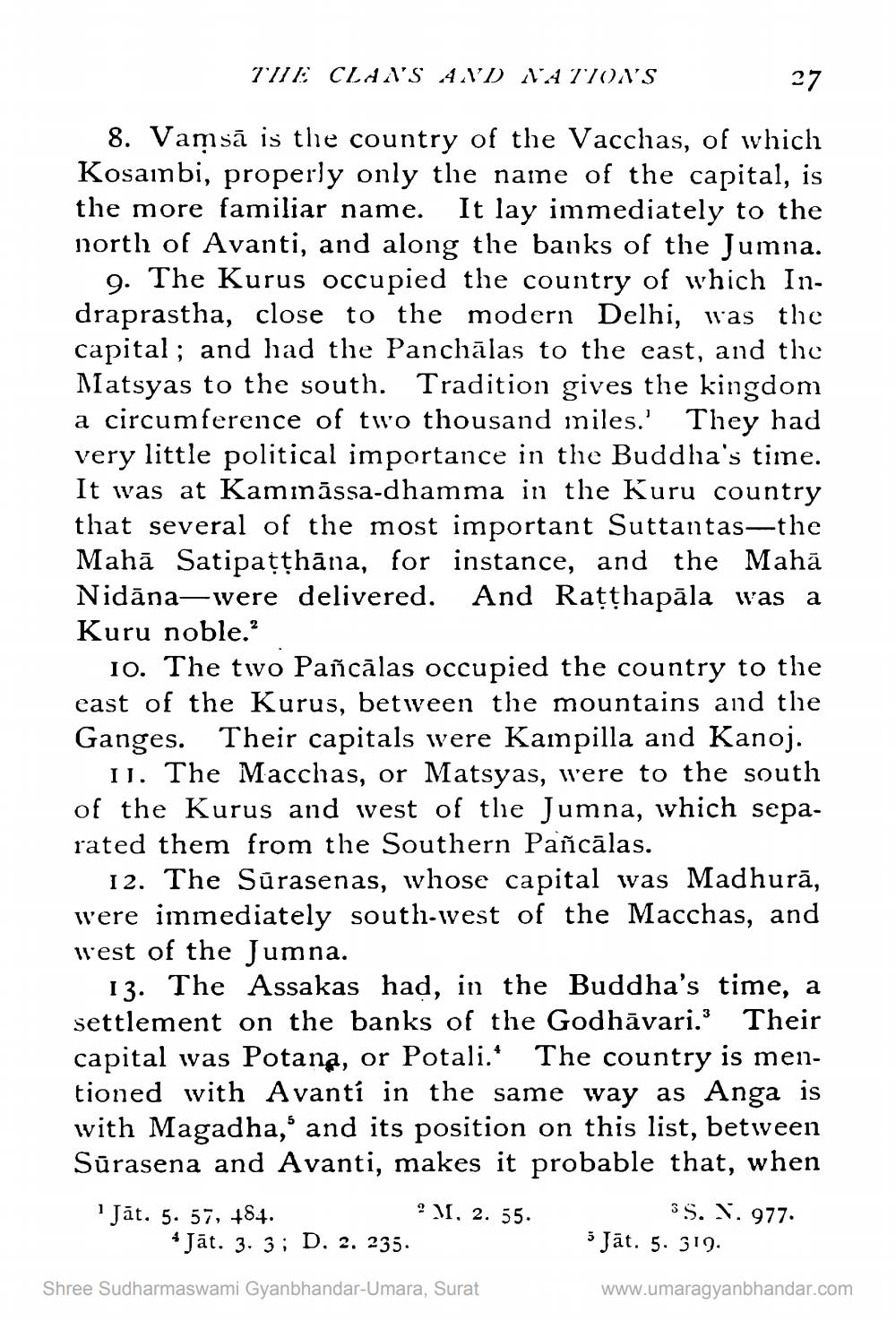________________
THE CLIA'S AND MATTON'S
27
8. Vamsā is the country of the Vacchas, of which Kosainbi, properly only the name of the capital, is the more familiar name. It lay immediately to the north of Avanti, and along the banks of the Jumna.
9. The Kurus occupied the country of which Indraprastha, close to the modern Delhi, was the capital; and had the Panchālas to the east, and the Matsyas to the south. Tradition gives the kingdom a circumference of two thousand iniles. They had very little political importance in the Buddha's time. It was at Kamınāssa-dhamma in the Kuru country that several of the most important Suttantas—the Mahā Satipatthāna, for instance, and the Mahā Nidāna—were delivered. And Ratthapāla was a Kuru noble.”
10. The two Pañcālas occupied the country to the east of the Kurus, between the mountains and the Ganges. Their capitals were Kampilla and Kanoj.
11. The Macchas, or Matsyas, were to the south of the Kurus and west of the Jumna, which separated them from the Southern Pañcālas.
12. The Súrasenas, whose capital was Madhurā, were immediately south-west of the Macchas, and west of the Jumna.
13. The Assakas had, in the Buddha's time, a settlement on the banks of the Godhāvari.” Their capital was Potana, or Potali. The country is mentioned with Avanti in the same way as Anga is with Magadha,' and its position on this list, between Sūrasena and Avanti, makes it probable that, when Jāt. 5. 57, +84.
M2. 55.
35. X. 977. • Jāt. 3. 3 ; D. 2. 235.
5 Jāt. 5. 319.
Shree Sudharmaswami Gyanbhandar-Umara, Surat
www.umaragyanbhandar.com




